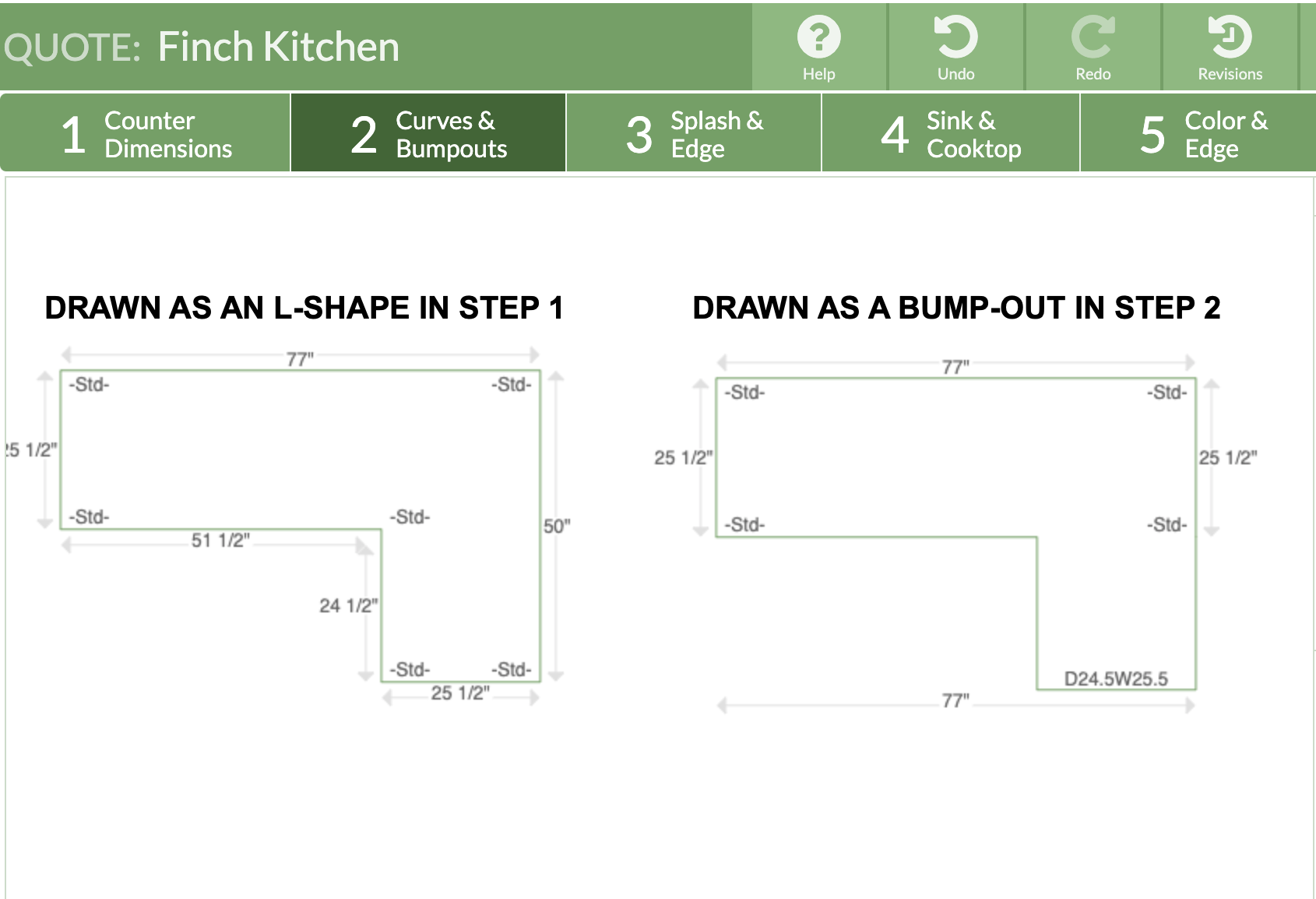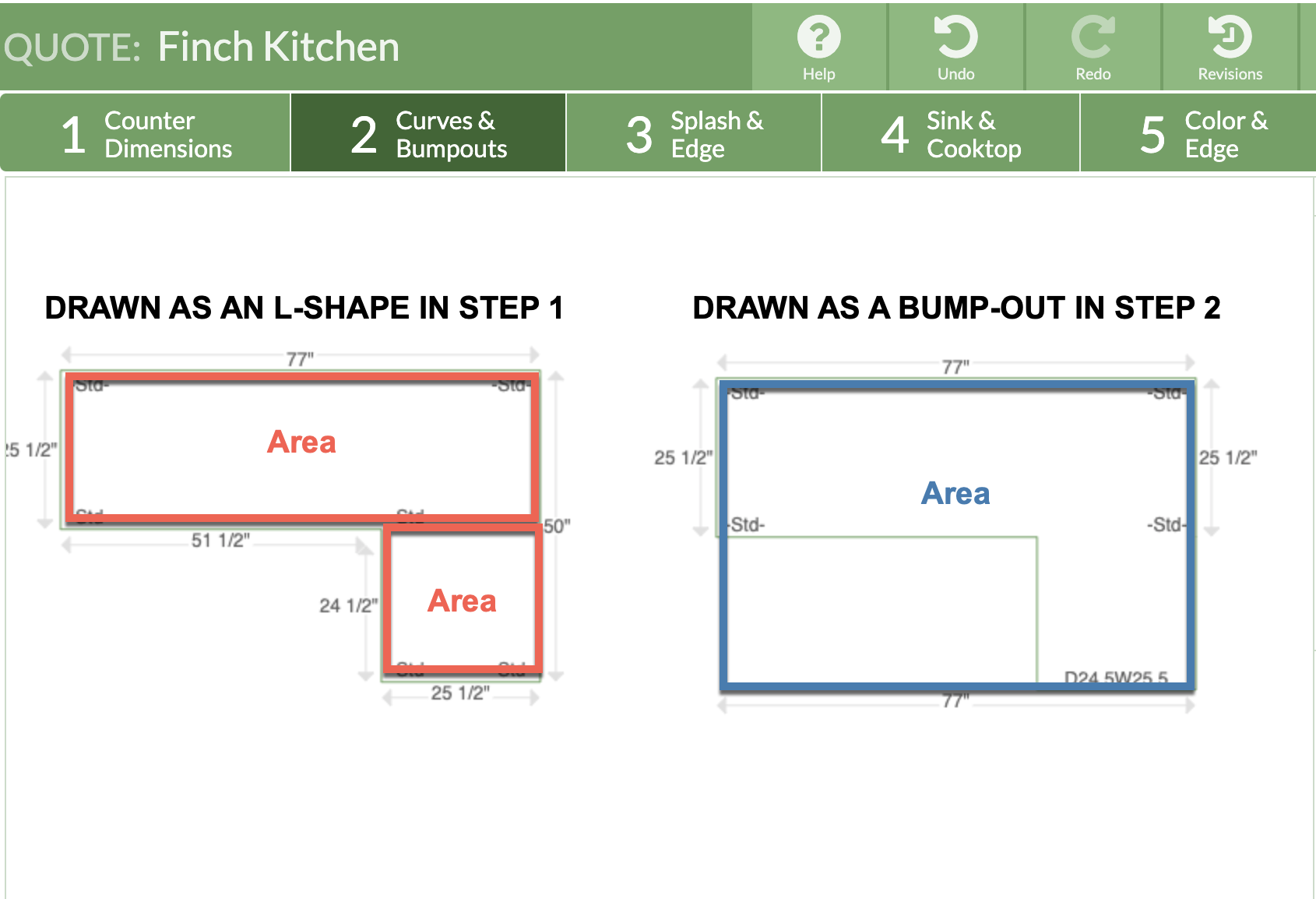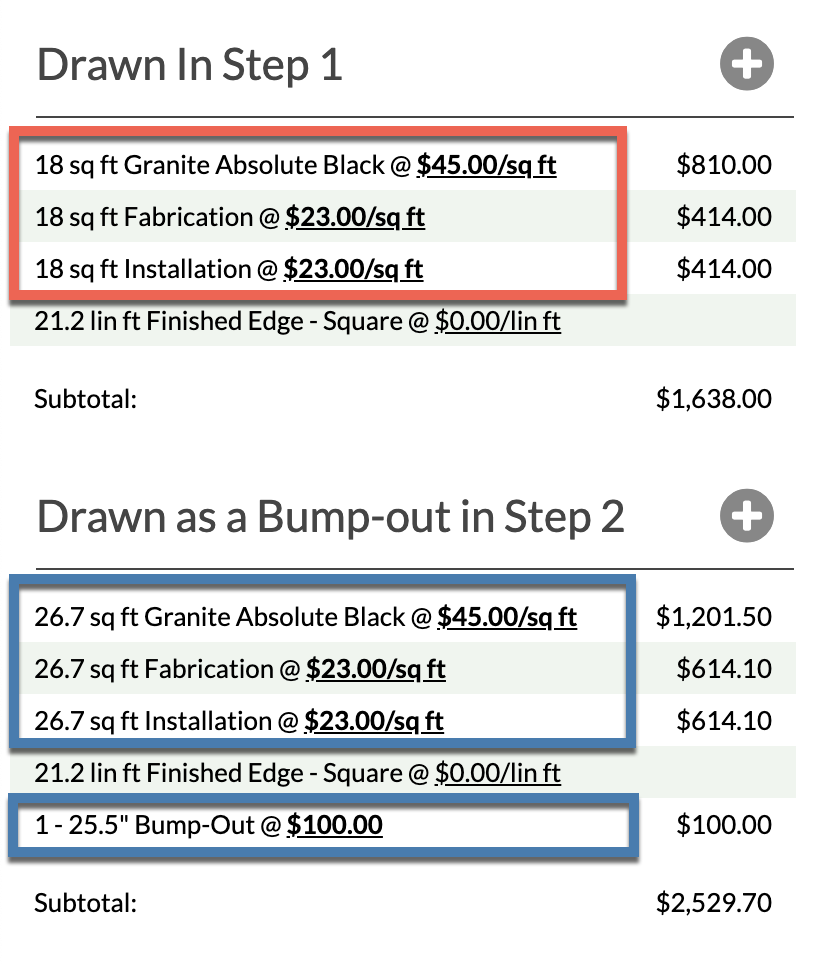How Square Footage Is Calculated
Not sure if you should draw an L-shape or use a Bump-out? How a countertop is drawn can impact how square footage is calculated. There are several different ways the same shapes can be created. Most of the time, the simplest way to draw a counter is best.
What goes on behind the scenes in CounterGo is fairly complex, so the most direct way to describe how square footage is calculated is to say that shapes are approximated and totaled.
The gray arrows may seem to be indicating the area being calculated, but they represent the length of the edge of the original shape drawn, which is not always the same as the dimensions of the final shape after angles, curves, clips, bump-outs, or bump-ins are applied.
Pricing by the Slab is a good way to make sure you don't under bid. And using the Slab Layout feature in Step 5 allows you to visualize what will fit on each slab.
The example below will show you an L-shaped counter drawn two ways, as a continuous shape or as a Bump-out. More complex shapes have their area calculated by approximating the shape with smaller shapes and overlaps.
CounterGo will always default to rounding that total up, not down, so you will not underestimate when Quoting.
The counter on the left was drawn as an L-shape in Step 1. The counter on the right was drawn as a rectangle in Step 1, then a Bump-out was added during Step 2.
The grey arrows showing the edge measurements vary between the two. On the counter on the left, the square footage calculated by the rectangles inside the L-shape, shown in red.
On the right side counter, the area is calculated by the larger blue box that surrounds the entire counter.

The square feet calculated for the Material, Fabrication & Installation charges are different in Step 6. There is also a line item for the Bump-out for the counter on the right.

